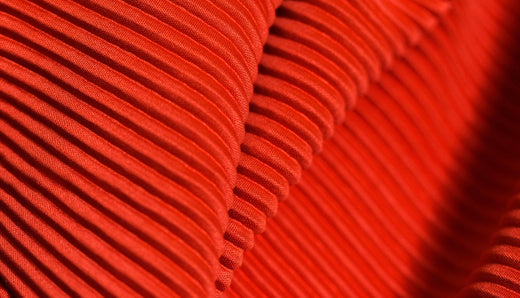Velvet of the Masses: Why Corduroy Never Goes Out of Style

The versatility, durability, and practicality of corduroy spurred a multi-century textile love affair that features quite the demographic cross-section.
It has been an equally popular choice for the working class as the aristocracy, for women, the military, and for children as well as the Ivy League set. Given the handsome workhorse it is, corduroy can even be deemed suitable for the field and semi-formal events!
Read on for the skinny on what corduroy is, what it’s made of, and learn about its history, as well as how, when, and where to wear this velvet-like fabric.
What is Corduroy?
Corduroy is a durable, woven fabric characterized by its distinctive ridged texture. These essentially consist of raised "cords" or "wales" running in parallel rows. The flat areas between the wales are called channels, which provide contrast and texture alongside the ridges.
There are a few different types of corduroy as defined by the wale size, i.e. the number of ridges per inch of fabric. Fine-wale or pinwale corduroy has narrow, closely-spaced ridges, typically with 16 or more wales per inch, giving it a soft and delicate appearance. Pinwale corduroy is often used for lightweight garments like shirts or dresses.
Standard corduroy has medium-sized wales, usually ranging from 8 to 14 wales per inch, making it versatile for trousers, jackets, and skirts. Wide-wale corduroy features larger, more pronounced ridges with fewer wales per inch, often between 1.5 and 6, creating a thicker, more durable fabric used for heavier garments like outerwear and upholstery.

Man wearing a pinwale corduroy suit
What is Corduroy Made Of?
Corduroy is typically made from cotton, but can also be blended with other fibers like polyester or wool for added softness or durability. It’s constructed with a pile weave - meaning the fabric has raised fibers or "pile" that give it a soft surface. This pile is cut in the process, forming its signature wales.
In the past, corduroy was sometimes referred to as the "poor man's velvet" because of its shared aesthetic and textural qualities with velvet. Often made from silk, velvet was reserved for the upper classes due to the complexity and cost of producing it.
Is Corduroy Water Resistant?
Corduroy is not inherently water-resistant. In fact, it is typically quite absorbent and, once wet, can feel heavy and uncomfortable until it dries.
However, corduroy can be treated with water-resistant finishes or coatings to make it more water-repellent. In these cases, the fabric can shed light rain or moisture, but it still won't be fully waterproof.
The History of Corduroy
Corduroy has a rich history that dates back centuries, though its exact origins are somewhat nebulous.
It’s believed to have roots in ancient Egypt, where fustian – a thick, durable fabric similar to modern corduroy – was used for clothing and other textiles. This early fabric had a pile weave, like corduroy, though it lacked the distinctive wales of corduroy.
It wasn’t until 18th century England that corduroy as we know it became widely popular. Its durability, warmth, and resistance to wear made it ideal for those who needed sturdy, long-lasting clothing - from laborers and landowners to children and the military. It was so popular, the Scotts even used it as covers for their bag pipes:

Musical Instrument Department Archive, Metropolitan Museum of Art, New York
By the 19th century, the functionality and rugged elegance of corduroy won the appeal of the upper classes who favored it for their hunting, riding, and other outdoor pursuits.
In time, especially as the fabric evolved in texture and quality, corduroy shed its strict association with purpose and began appearing more frequently in mainstream fashion.
The Etymology of Corduroy
The origin of the word "corduroy" is somewhat debated and wrapped in folklore, but its most commonly cited explanation traces back to the combination of English and French elements.
One popular but disputed theory suggests that corduroy comes from the French phrase "corde du roi", which translates to "cloth of the king." According to this interpretation, the fabric was originally associated with French royal servants or nobility. However, there is little historical evidence to support this claim, and many linguists believe it to be more of a myth than fact.
The more plausible origin lies in the English language, with the word "cord" referring to the wales, and "duroy" to a type of coarse woolen fabric produced in England in the 18th century. The term cord-duroy, then, could have been a natural evolution of these words.
Corduroy Color History
The first two hundred years or so of corduroy history most likely featured earthy, utilitarian tones like brown, olive, and navy. As the 20th century progressed, corduroy transitioned into casual and even semi-formal wear.
But by the time we were midway into the 20th century – and the 60s and 70s were in full swing – corduroy in many colors was in high demand. Trousers, jackets, and skirts in a range of bright hues like mustard yellow, deep burgundy, forest green, and burnt orange, reflected the era's bold and eclectic styles.

Is corduroy in style now? Absolutely. Today, corduroy is embraced for both casual and smart-casual wear among those who seek a mix of comfort and sophistication, as well as those who value retro and sustainable fashion.
It has been reinterpreted by designers, appearing in a variety of styles, from classic trousers and blazers to more modern cuts and colors, such as bold jewel tones or pastel shades. It’s frequently seen in both men's and women's fashion, often as pants, skirts, jackets, and even bow ties and neckties.
When to Wear Corduroy
Corduroy continues to be prized as a versatile fabric that can be appropriate for a variety of dress codes, depending on how it’s styled and the type of garment. It is especially popular in the fall and winter, and pairs beautifully with other traditional cool-weather fabrics, like tweed and herringbone.
If you have new or vintage pieces and are not sure what to wear with corduroy pants or a corduroy blazer, consider a simple swap – pants can be a stylish substitute for jeans, chinos, khakis, or dress trousers, and a corduroy blazer can be an interesting alternative to a navy blazer.
Casual Dress Code
Corduroy is ideal for casual wear, offering comfort and style. Corduroy pants or jackets are common staples in men’s casual wardrobes and can be paired with T-shirts, sweaters, flannel shirts, and casual jackets for a relaxed but put-together look.
Wide-wale corduroy pants or jackets pair perfectly with more rugged or laid-back pieces. Corduroy shirts are also a comfortable and stylish alternative to standard cotton options.

Business Casual Dress Code
Are corduroy pants business casual? They can be! In a business casual setting, corduroy can elevate a gentleman's outfit while maintaining a relaxed feel. It’s all about fit. A tailored trouser or blazer in a neutral or earth tone works well with a button-down shirt, sweater vest, or lightweight knit sweater. The key is to choose finer-wale corduroy for a more polished and professional appearance.
Smart Casual Dress Code
For smart casual occasions, corduroy adds a refined but approachable texture to an outfit. Pairing a well-fitted corduroy blazer or tailored trousers with a turtleneck or a crisp button-down shirt and loafers creates a sophisticated yet relaxed look. Rich colors like navy, dark green, or burgundy work well for this dress code.
Semi-Formal Dress Code
While corduroy isn’t traditionally considered a formal fabric, it can be adapted for some semi-formal settings. Fine-wale corduroy in darker, muted colors like navy, charcoal, or deep burgundy can be used in sport coats or dress pants. When paired with a tie and polished dress shoes, corduroy can add a touch of texture to a semi-formal outfit, though it remains on the more casual end of this dress code.

Have corduroy in your wardrobe? Show us how you style it! Tag us @RHanauer on Instagram and Facebook! For more menswear history, style guides, how-tos, and inspiration, check out our blog, The Gentleman’s Guide.


